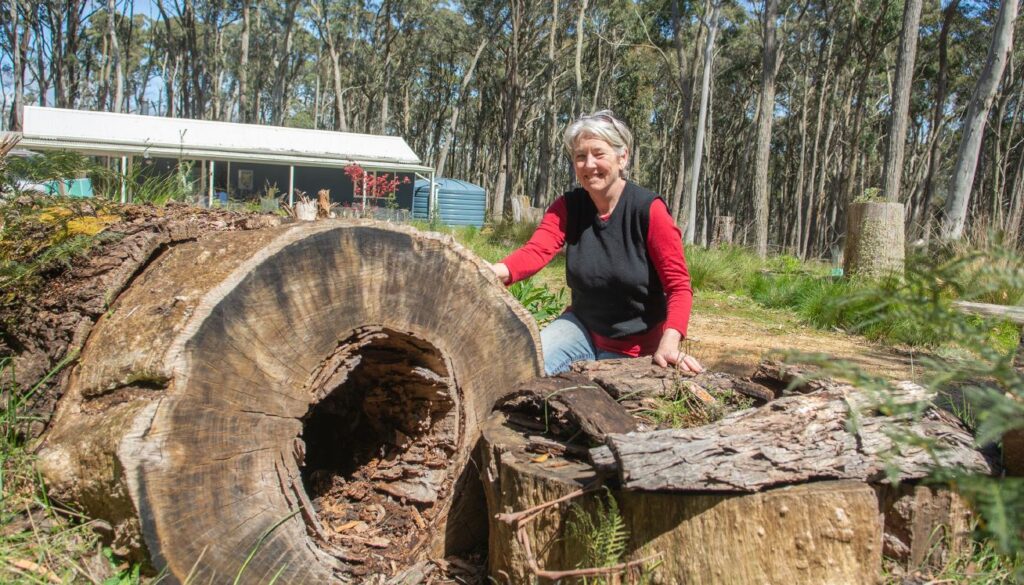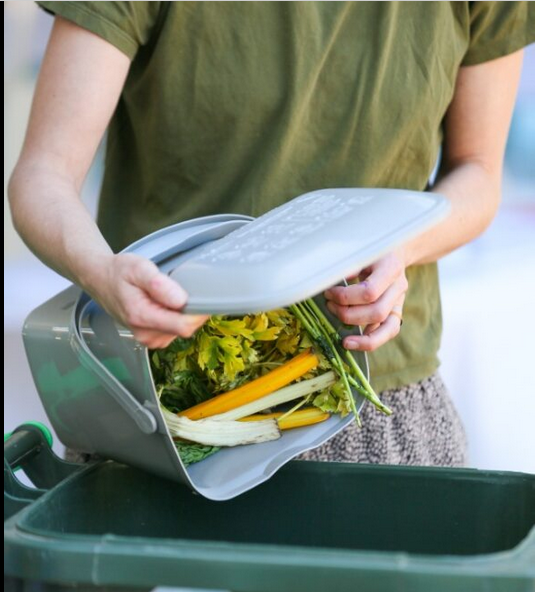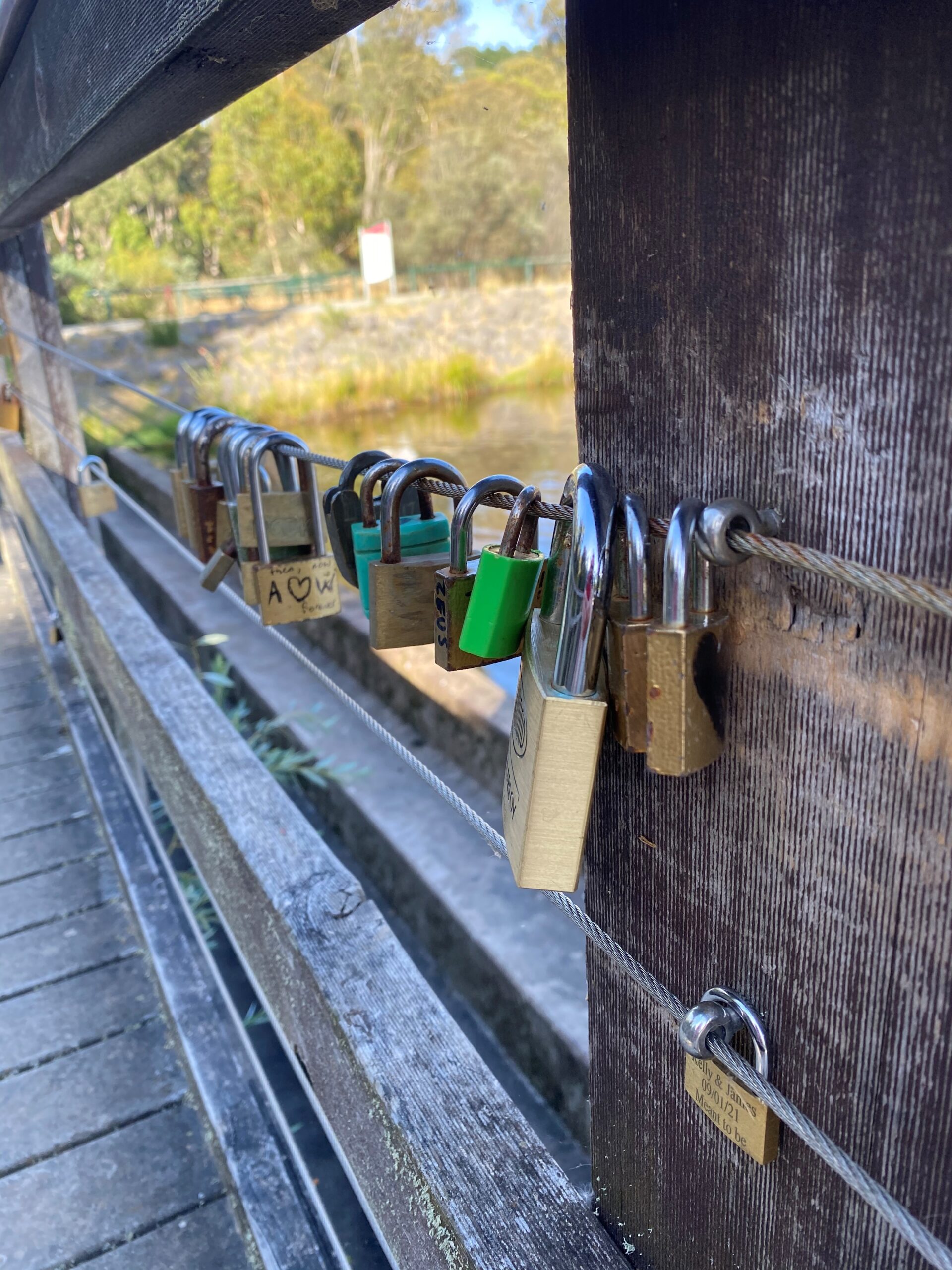November 9th, 2023Responsible building on bush blocks
Words & image: Tony Sawrey

In a region such as the Central Highlands, the natural environment is what attracts people to this area, it sustains our tourism industry and by extension, the real estate market as people seek a more permanent escape from the city.
But, of course many new landowners, especially those on bush blocks, must take into consideration the potential perils of the scrub that surrounds them and the possibility of forest fire.
With this concern in the back of the mind owners respond to the threat in various ways. The most extreme being to bring in the machinery, clear away and remove everything, wipe the slate clean. It is an approach that is pretty common and you don’t have to look too hard to see examples of such wholesale clearing.
But is this the only way to develop a bush block? Strip it bare? What about the creatures that live in that environment? Surely there is a middle path between preparing your place in case of fire and allowing the local wildlife some form of shelter and sustenance for the rest of the time.
On the other hand, while some commentators on social media might have you thinking the entire place is ready to be overwhelmed by rapacious development, the reality is nothing like those peri-urban regions where vast housing estates march to the horizon.
Here development advances quietly, often hidden and in piecemeal but persistent fashion. And while the Hepburn Shire Council does have specific guidelines relating to bush block development, it is not a straightforward matter as Bradley Thomas CEO explains:
“The removal of native vegetation is a complex matter. Native vegetation generally requires a permit to be removed, however, each property should be assessed on its own merits.
“Factors considered in determining whether a permit is required include zoning, the size of the land and any environmental overlays (eg, bushfire management overlays).
“Council continues to take enforcement action on native vegetation removal. Property owners who are unsure of the requirements for permits for the removal of vegetation on their own land can contact council for guidance.”
However Gayle Osborne at Wombat Forestcare feels that in some cases people have probably cleared more than they are legally allowed to. And there doesn’t seem to be any follow up to make sure that people have stuck to the guidelines.
“It is quite a distressing situation,” she says, “because we are clearing more native vegetation than we are regenerating. We are also losing mature trees that are needed as habitat for koalas particularly and possibly losing trees with hollows that affect creatures like gang-gangs which are now a threatened species.”
Another concern is when people strip away dead standing trees and undergrowth. But Gayle urges landowners to keep some perspective when doing such work. Dead trees are organic apartment blocks for nesting birds from parrots to treecreepers and suites for greater gliders.
Fallen timber is full of little insects, many of which are pollinators and sustain little birds such as blue wrens. The thin carpet of mulch on the forest floor has taken many generations to build on top of clay and much of the vital nutrients for growth are in it.
Maree Keating, pictured above, is a land owner with a small, pretty blue house abutting the north Wombat State Forest surrounded by native flowers and grasses. She lost many trees in the great storm of 2021 and fuel load mitigation is a constant concern, but Maree’s clean-up and maintenance approach keeps the native ecology firmly in mind and the native creatures that depend on it
“After the 2021 storm I had a team come over and clean up all the fallen trees at the front,” she says. “Some really wanted to flatten the land for me and remove the organic rubbish and tidy it up. I had to explain about weed infestations every time the tractors go into the land, and also that the roots and stumps and beheaded trees were all really valuable habitat for birds, snakes, wombats and so on.”
Today, her land retains much of this fallen timber, forming boundary fences and new habitat. Some of the larger logs are slowly hollowing out creating shelter for the many mammals that share her land from echidnas to tiny marsupial mice.
And while the possibility of fire remains a concern, Maree is more conscious of the needs of the original inhabitants of the surrounding forest.
“Ultimately owning a bush block or land with native habitat on it comes with it a responsibility to care for the creatures that share it with you.”










